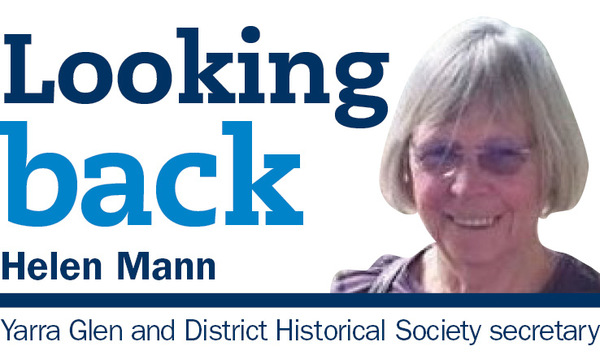Before the days of motorised vehicles and shopping centres, people in country areas often depended on travelling salesman, or hawkers, for clothing and footwear, soft furnishings, haberdashery and other items.
A hawker who travelled in the Yarra Glen district during the first thirty years of the twentieth century was known variously as Yokum, Okum or Gareeb.
The latter is the name found in official documents, but he was known locally as Yokum.
He was born in Mirpir, Punjab, India in 1879. Yokum came to Australia about 1900, working his passage on a ship.
After leaving the ship in Melbourne he applied for a hawkers’ licence.
For the first twelve months he travelled between Melbourne and Bendigo, but he settled on a route that took him through the Yarra Glen, Mansfield and Yea areas.
He obtained his stock from Denniston & Co, Wholesale Clothing Manufacturers of Flinders Lane Melbourne and S & M Taboor, Importers and Manufacturers of Exhibition Street.
Alma Goss (nee Ellis) who grew up in Dixons Creek, recalled that initially he came on foot, carrying a pole over his shoulder with a heavy bundle tied at the end. It was covered with a white calico-like fabric.
These bundles would be sent out for him to collect at strategic places on his route.
He slept outdoors, or with permission, in someone’s shed, but never in the house.
Later, he had a dark-coloured wagon pulled by a white horse. He then slept in his wagon and his horse was hobbled or placed in a paddock.
As business prospered, he was able to obtain a high, covered wagon drawn by two horses, one behind the other. This wagon was colourful, with exotic landscapes, scrolls and other flourishes, painted on its sides.
The harness of the horses was enhanced with tinkling bells.
Yokum was well liked and respected among his clients, although very young children were often initially shy because of his exotic appearance. He was a tall man and wore a turban.
Older children were entranced however, not only by the contents of his wagon, but sometimes by the food he cooked over his campfire which he happily shared with them, if they were game to have a taste.
Yokum’s trade was eventually superseded by motor transport and he returned to Mirpur in the late 1930s.
Many other Indian hawkers remained in Australia, becoming storekeepers and traders.
Frank Ricardo took over the route, and expanded into other districts because he did the rounds in a Chevrolet truck.
This was replaced in the 1960s with a red Bedford which had a customised body to transport and display his goods.
Frank’s visits were as full of wonder for young children as the carts of earlier times. Many will remember Frank unlocking the doors of the van and spruiking his wares – always making suggestions of what would suit each member of the family.
And of course, there was always the small bags of boiled sweets that Frank handed out at Christmas time.
He made many friends and over the years that he travelled he knew some families through two or three generations.
Like the Indian hawkers before him he not only provided useful goods, but also carried news and messages and assisted individuals and families in a number of ways.







